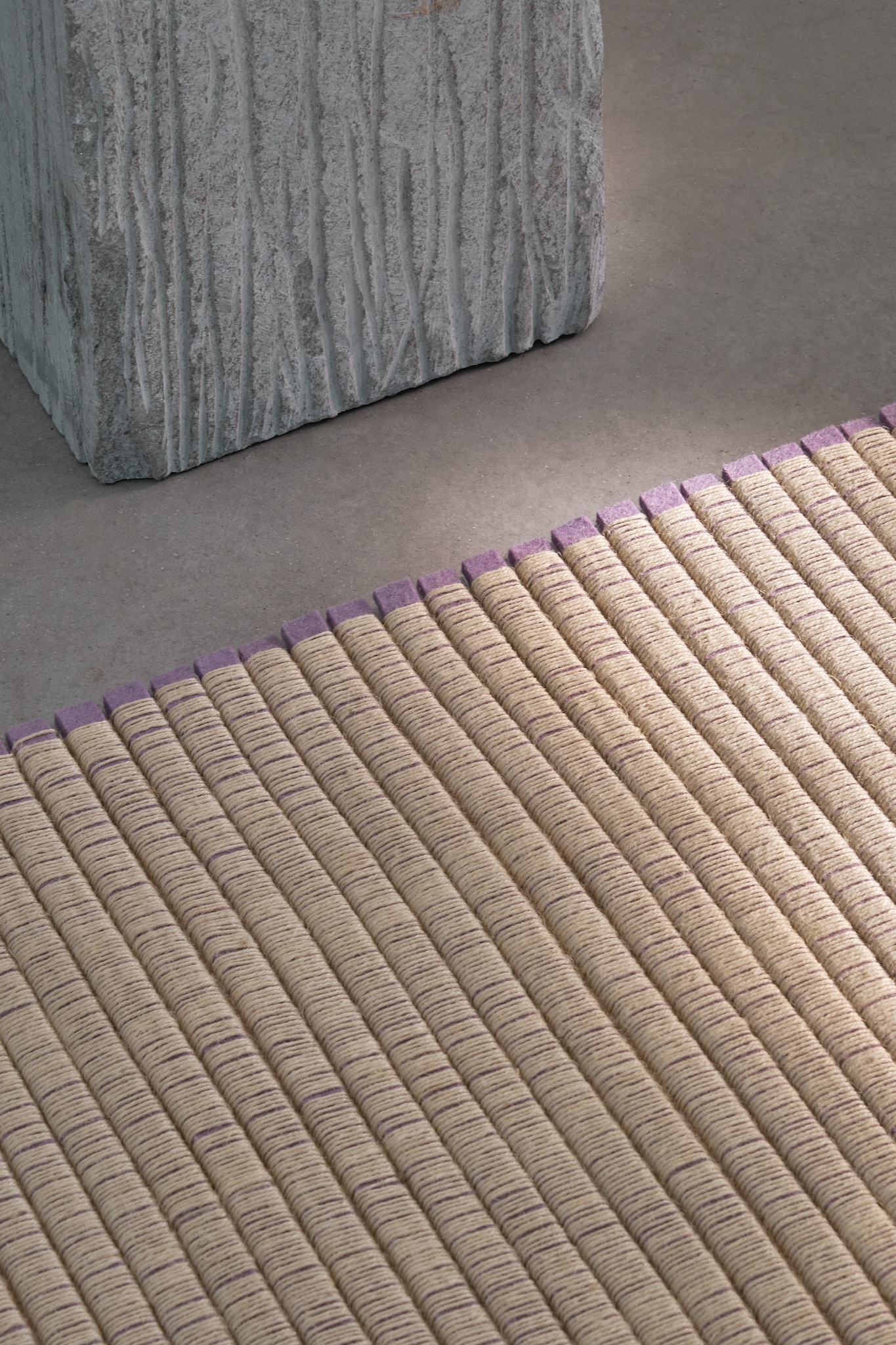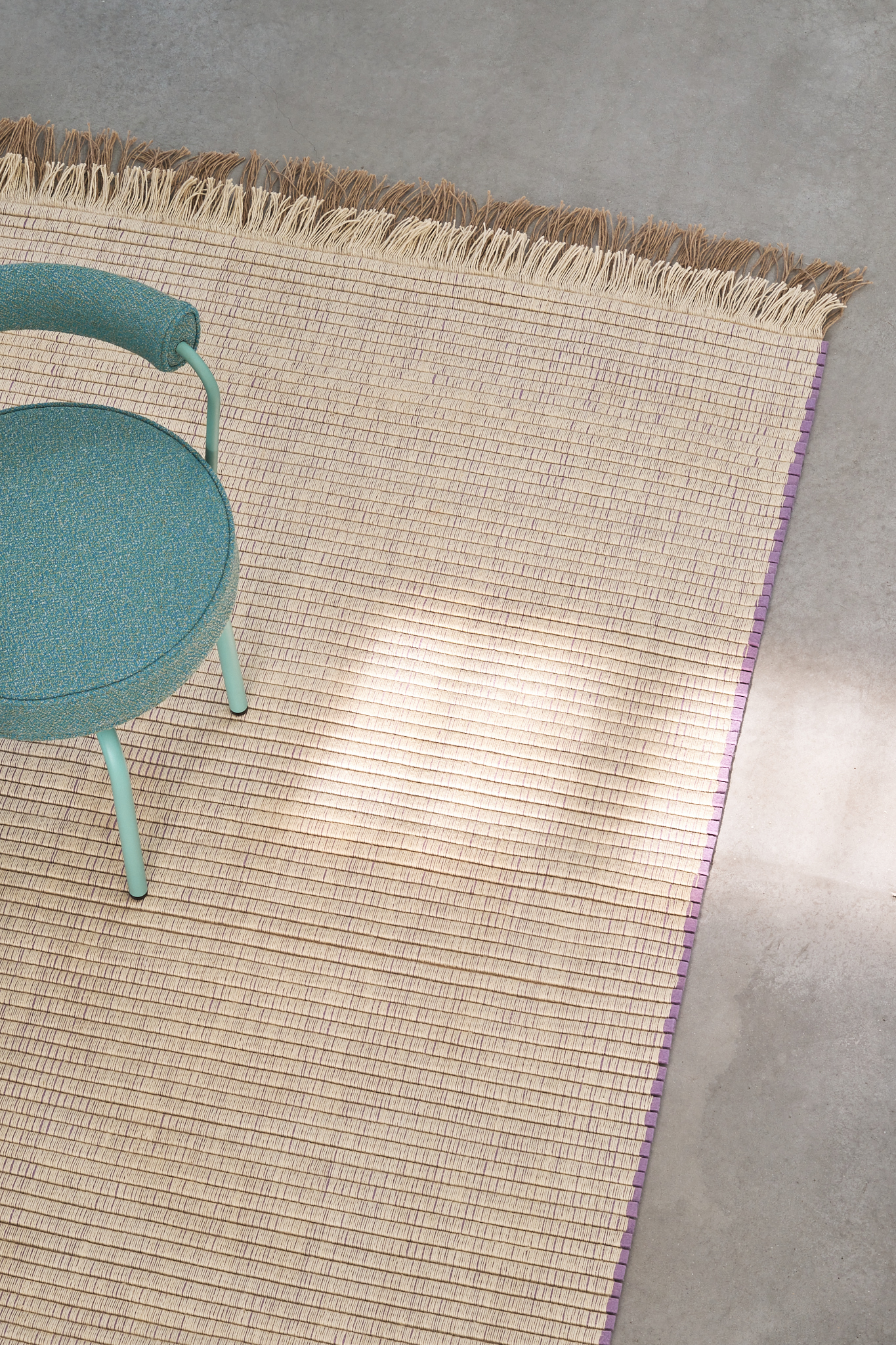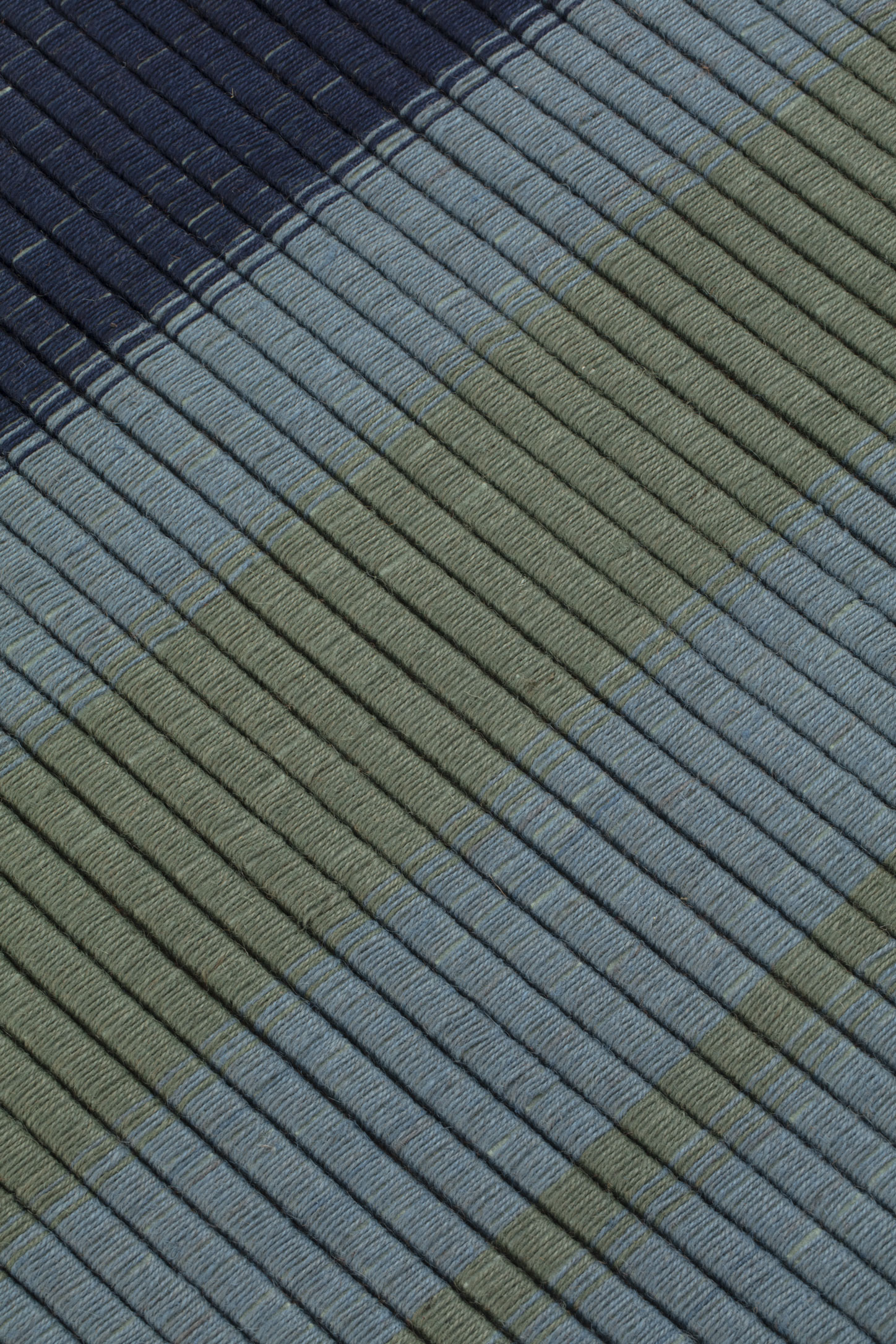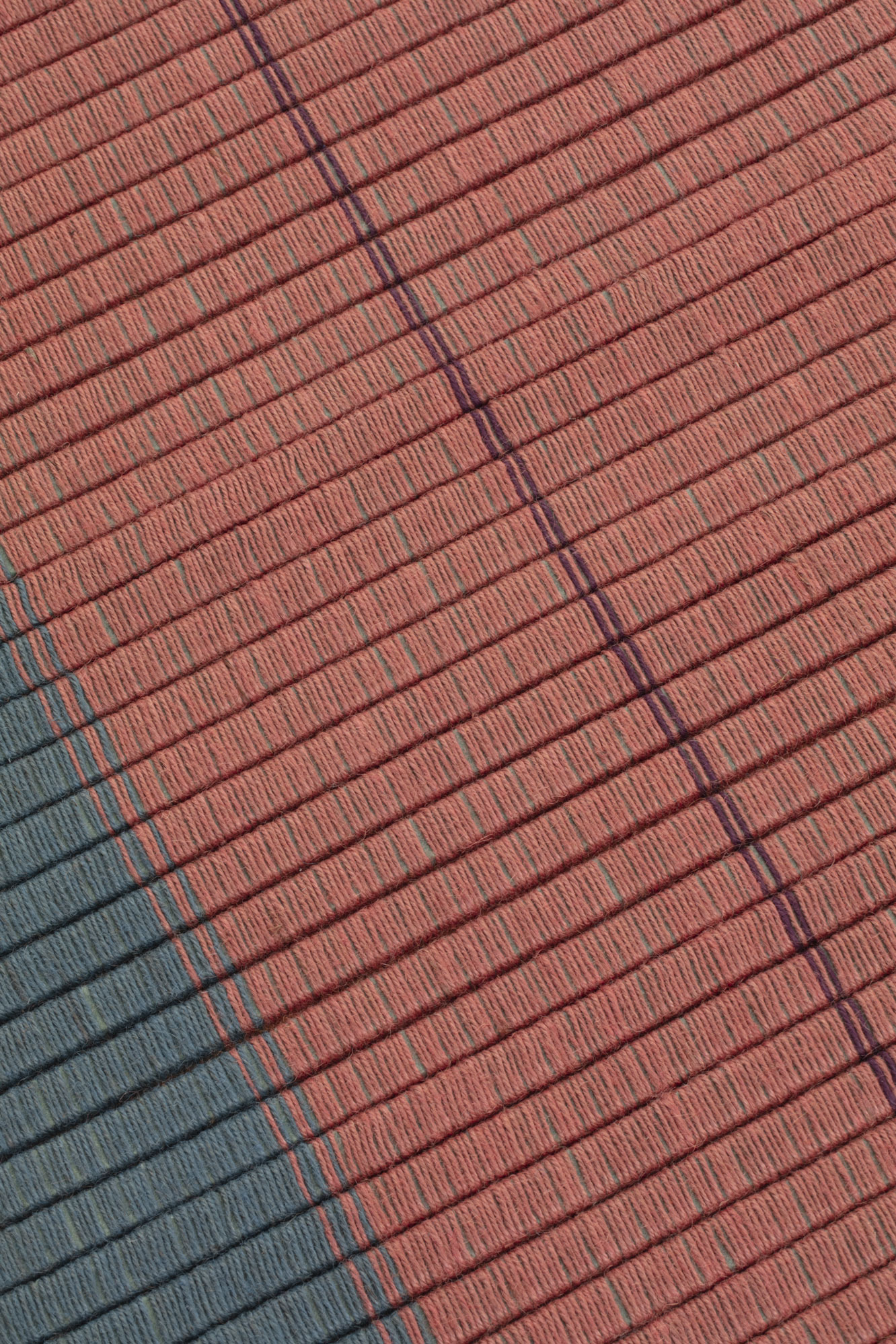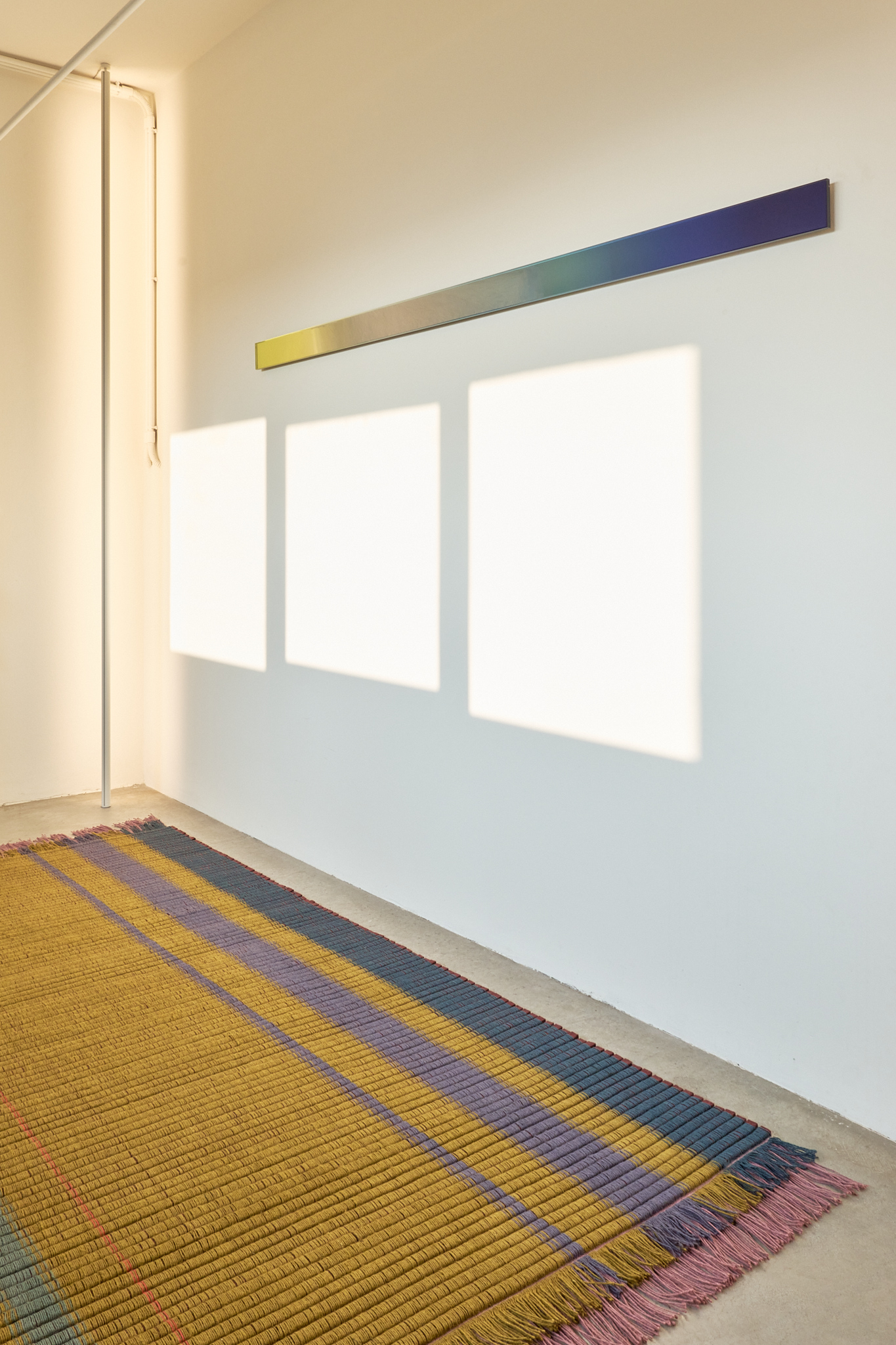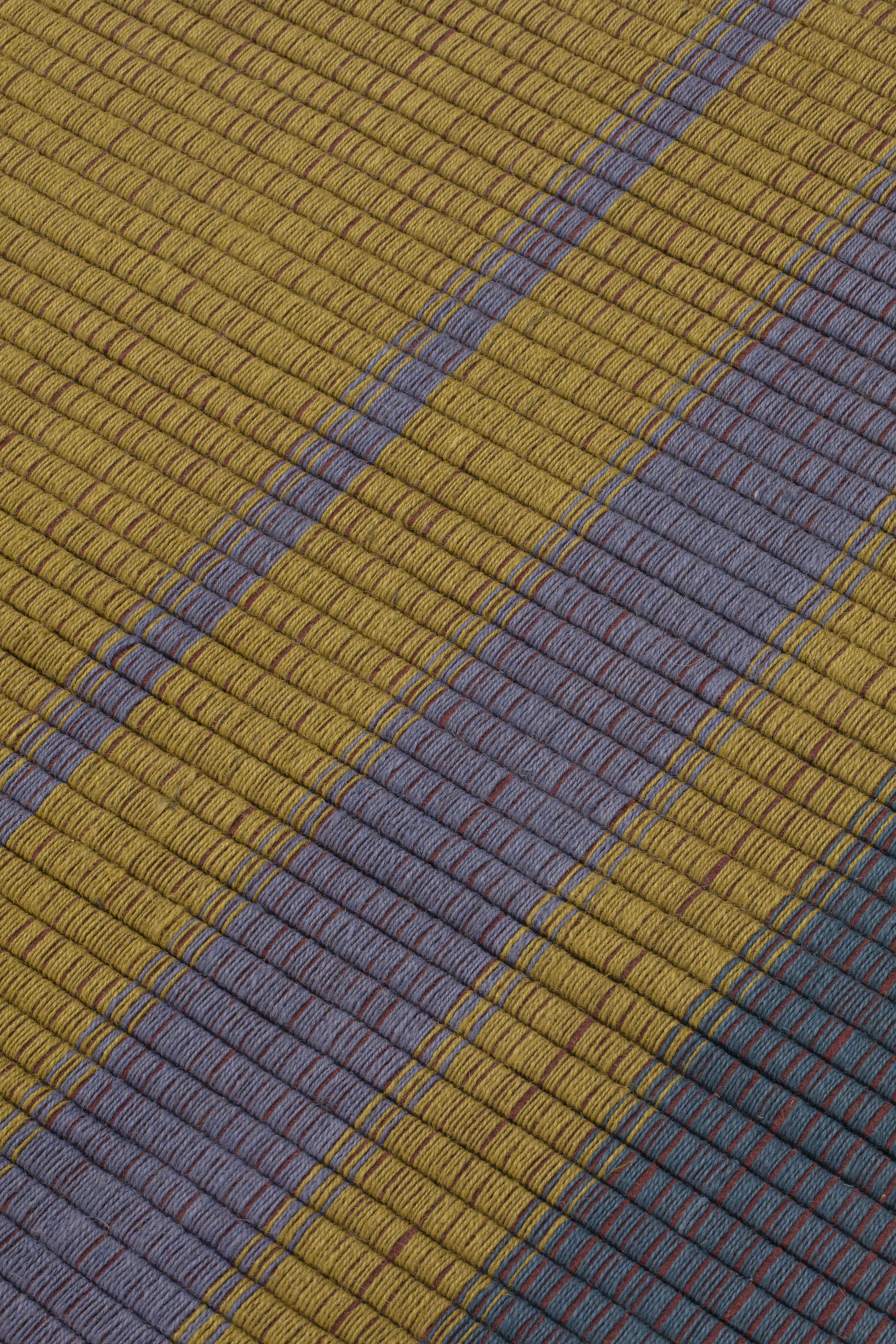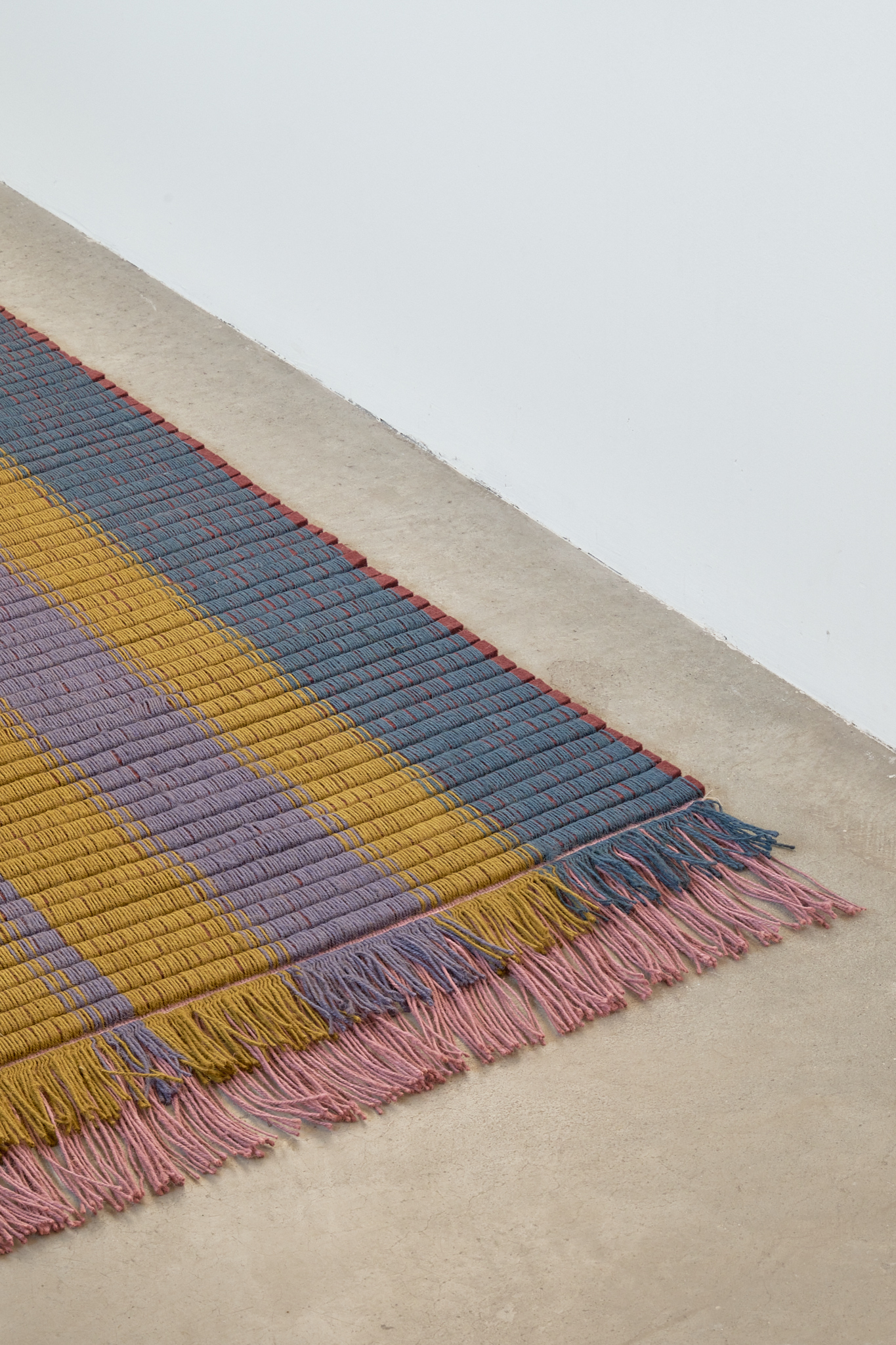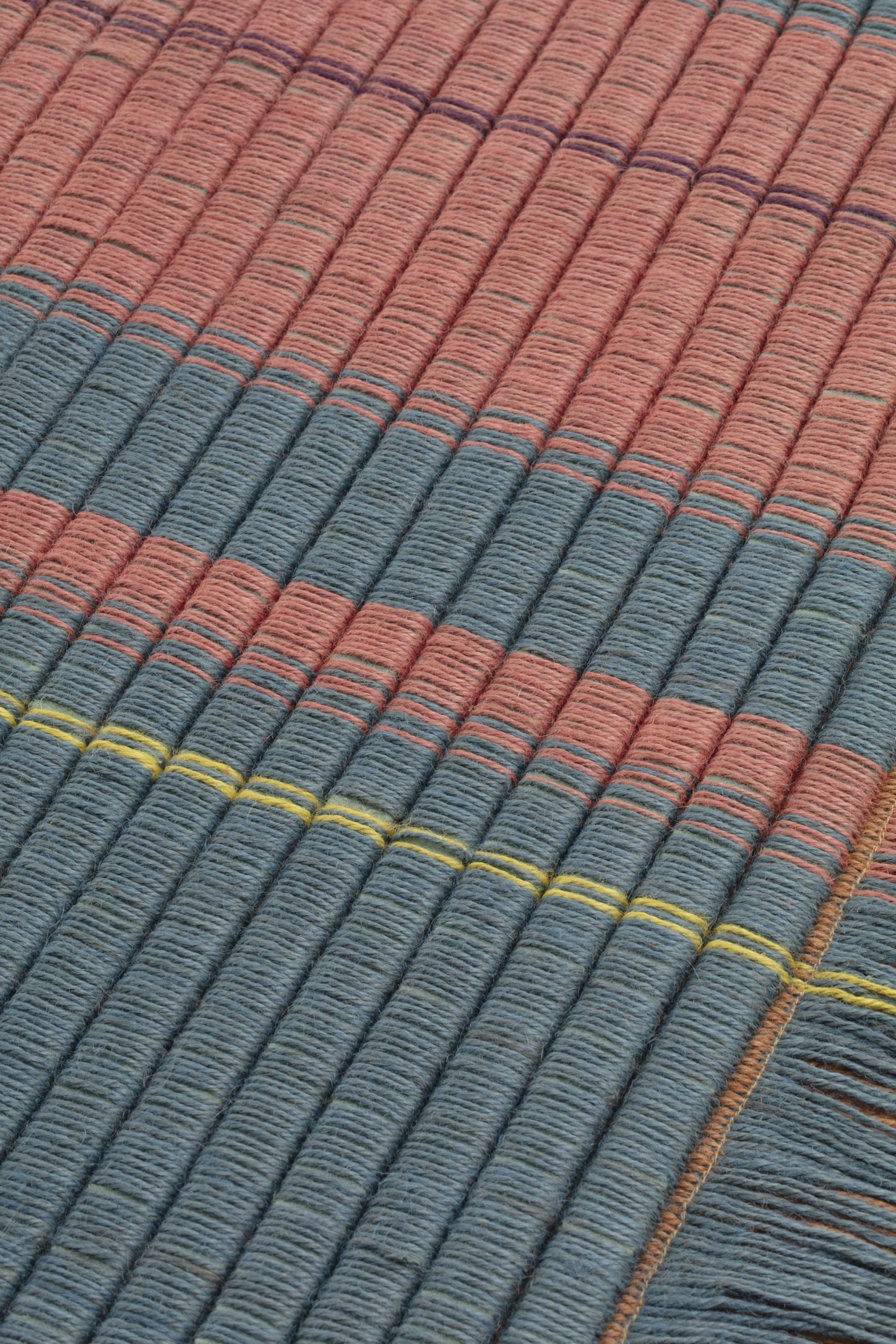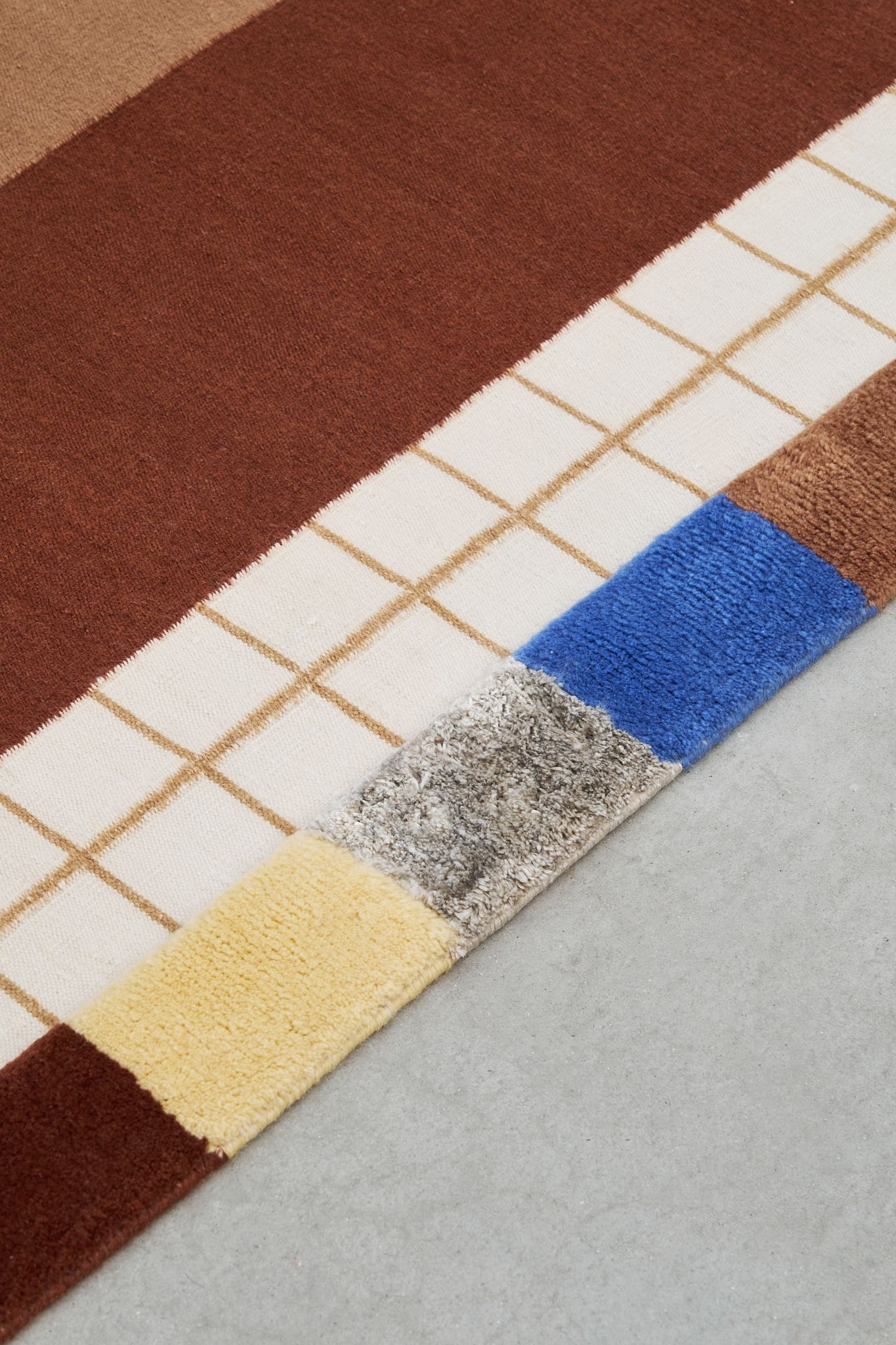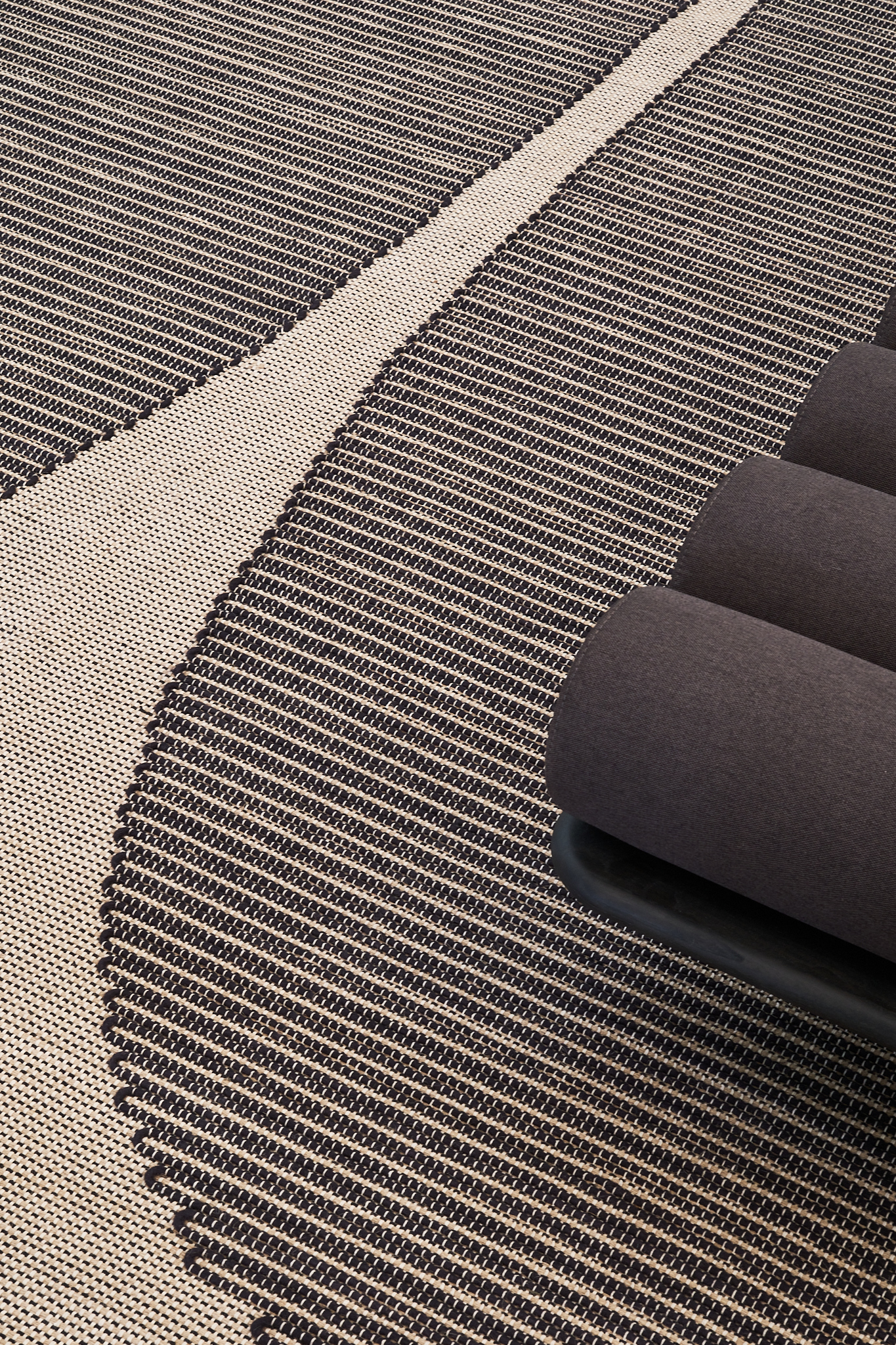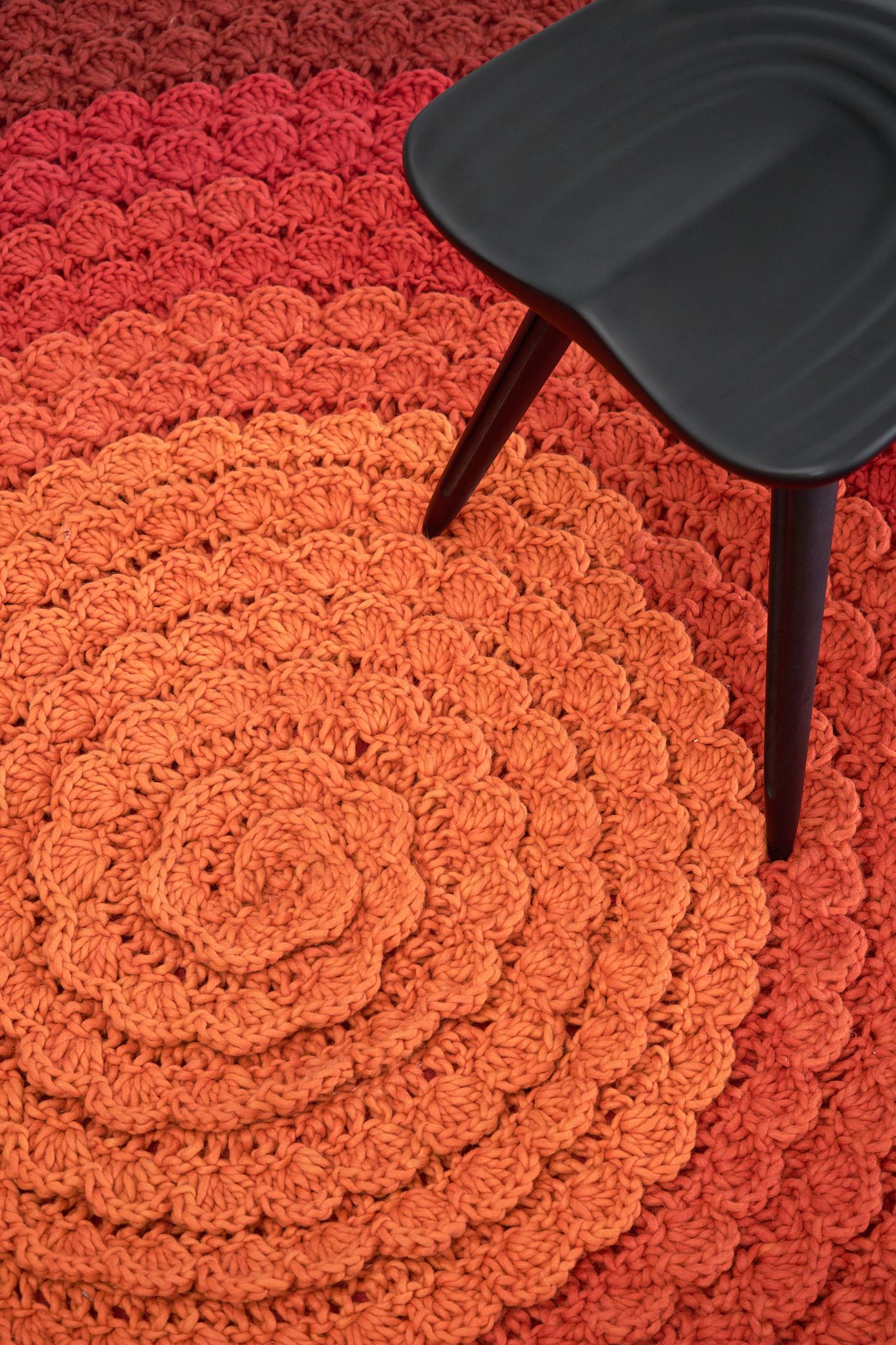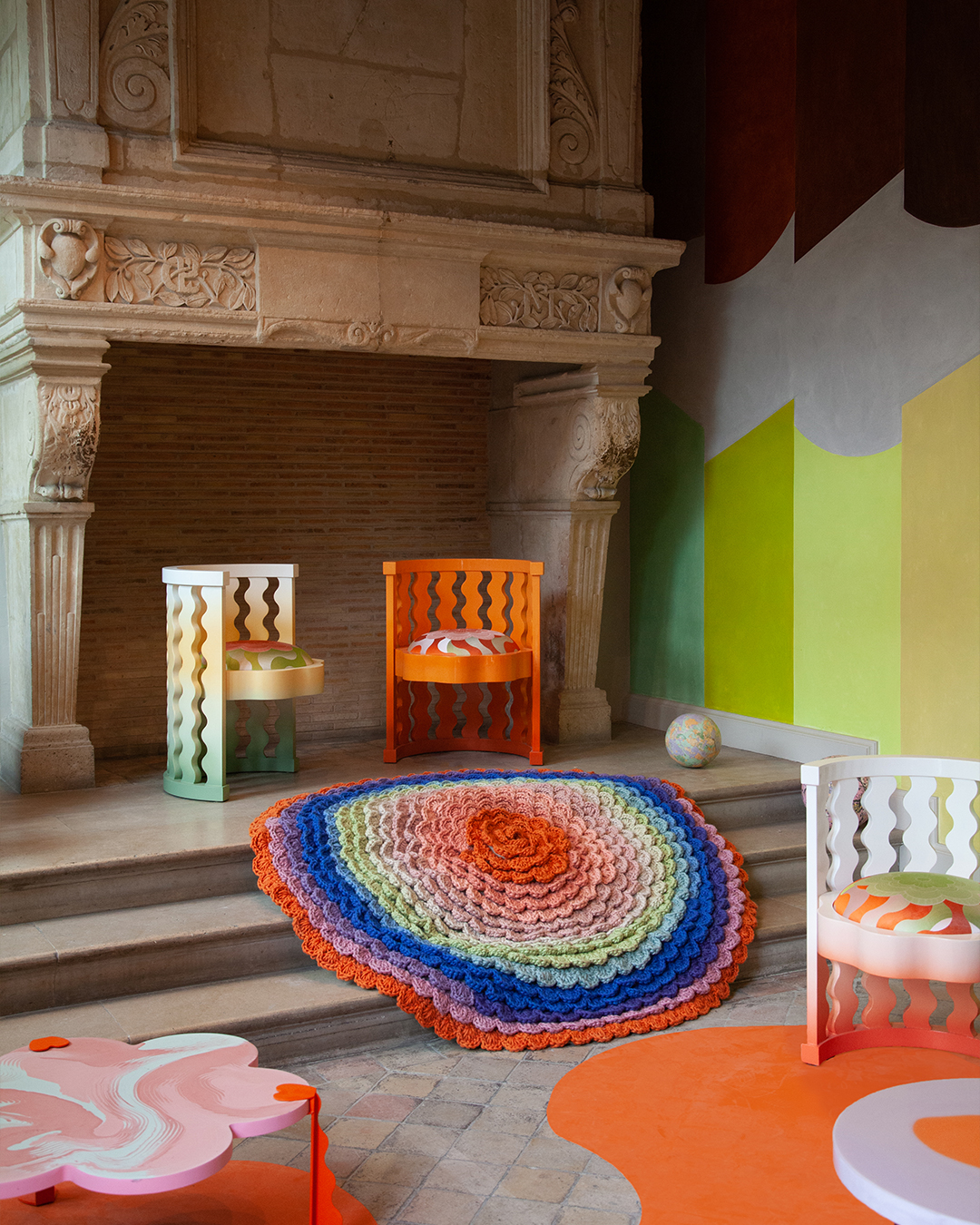-
01 CHARLES-ANTOINE CHAPPUIS
ONDA ONDA COLLECTION Grab a caipirinha with extra lime and enjoy the relaxing vibes of Onda Onda. Celebrating the designer’s Brazilian heritage, the col- lection explores how stripes can coexist on the surface of hand-woven rugs. By weaving jute lines in a rhythmic dance, Indian artisans create curved silhouettes moving freely in opposite directions in a vibrant color scheme inspired by the sandy beaches of Northern Brazil. -
02 MAE ENGELGEER
OMOTE COLLECTION Omote is the top woven part of a tatami mat, a traditional Japanese floor covering used in private homes and temples to create a welcoming environment. The collection takes Mae Engelgeer’s love for this elegant weaving structure into the world of rugs. Together with the cc-tapis team, the designer investigates the minimalistic structure of tatami replacing traditional Japanese igusa straw with strips of felted wool, dyed in signature shades. Experimenting with the 5 handloom process, natural yarns are woven around the cozy and insulating felt, recreating the suppleness and softness of the tatami mat. -
03 PATRICIA URQUIOLA
SONORA COLLECTION Spanish architect and designer Patricia Urquiola harmonizes ancient embroidery techniques with contemporary graphics for the Sonora collection. Reinterpreting the Petit point embroidery technique on a macro scale, continuously varying motifs create a dynamic visual effect, echoing the vibrant fluidity of sound propagation. Sonora comprises of a single rug design, available in three color combinations and a handwoven pouf. -
04 DOSHI LEVIEN
RAAG COLLECTION Doshi Levien reveal Raag, a collection of rugs which offers a new way of looking at India through a contemporary lens. Choosing to work within parameters, the multidisciplinary designers experimented on a self-imposed grid, collecting, matching and playing with colorful hand painted samples. Scaling down their chromatic spectrum to 7 colors, Nipa Doshi and Jonathan Levien interpreted the sequence of notes associated to the classical Indian music system “Raag”, with a chromatic language of composition and proportion. Following the designers’ original grid, cc-tapis artisans weave a flat fabric on which some or all seven notes (colors) are played in ascending and descending scales, producing surprising rhythms which “are not just random patterns, there’s mathematics and experimentation behind it” - specifies Nipa Doshi.
-
05 CHIARA ANDREATTI
VICE VERSA COLLECTION Profoundly influenced by the 20th-century Bauhaus movement, Chiara Andreatti constructs Vice Versa. A collection of hand-woven rugs made by expert Indian artisans where graphic and optical shapes define a rhythmic and hypnotic design. An ode to primordial gestures which embrace minimalism through the use of undyed colors, applying natural materials such as jute and wool to the bold geometry of the design. Line by line, cc-tapis artisans weave the weft and the warp together, combining the positive and negative shapes of the design, which is revealed on both sides of the rug. -
06 INDIA MAHDAVI
 CRISS CROSS COLLECTION Introducing Criss Cross by India Mahdavi, a convergence of graphic and geometric elements dyed in captivating color combina- tions, intersecting the Iranian-French architect’s distinctive language with traditional processes and timeless elegance. Meticulously crafted, the collection unites two worlds of artisanal production: chain-stitching and hand-tufting.
CRISS CROSS COLLECTION Introducing Criss Cross by India Mahdavi, a convergence of graphic and geometric elements dyed in captivating color combina- tions, intersecting the Iranian-French architect’s distinctive language with traditional processes and timeless elegance. Meticulously crafted, the collection unites two worlds of artisanal production: chain-stitching and hand-tufting. -
07 UNIVERS UCHRONIA
SWIRL COLLECTION Univers Uchronia designed a textural, voluminous landscape on which to sit, recline and be. Working with small maquettes, the studio experimented with woolen yarns, utilizing various knotting and crochet techniques. cc-tapis had the challenge of translating Universe Uchronia’s scale models into large scale rugs, finding a family of artisans in Rajasthan who were able to create the rugs using felted yarns and thick custom needles.
-
08 CLARA VON ZWEIGBERGK
LOOPY COLLECTION Swedish designer Clara von Zweigbergk applies her unique visual language to Loopy, a collection of three hand-woven rugs which exploit the freedom of crocheting. Moving between graphic and product design, Clara plays with clean geometric shapes and contrasting colors chosen for the harmony of their hues. Following the designer’s original artworks, Indian artisans apply the traditional manual process of crocheting to translate three artifacts into hand-woven rugs.











